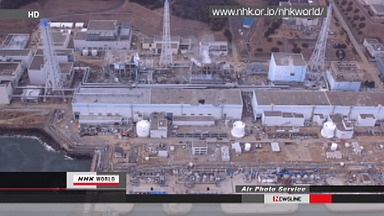The science ministry says the amount of radiation accumulated over about half a month in some areas of Fukushima Prefecture has exceeded the permissible level for a whole year.
Since March 23rd, the ministry has been measuring radiation levels in 15 locations more than 20 kilometers away from the crippled Fukushima Daiichi nuclear power plant.
At one location, in Namie Town about 30 kilometers northwest of the plant, 14,480 microsieverts of radiation had accumulated over the 17-day period to Sunday.
8,440 microsieverts of radiation were observed in Iitate Village.
In another location in Namie, the amount reached 6,430 microsieverts.
People would be exposed to this accumulated amount of radiation if they had stayed outdoors throughout the entire period.
The level at one location was more than 14 times the 1,000 microsieverts that the International Commission on Radiological Protection recommends as the long-term annual reference level for people. The recommended level of 1,000 microsieverts excludes radiation from the natural environment and medical devices.
Hiroshima University Professor Kiyoshi Shizuma says most of the radiation observed in Fukushima is believed to be radioactive cesium that has fallen to the ground.
Shizuma advises residents to wear masks to avoid inhaling radioactive substances mixed with dust.
He points to the need to take samples both from the air and the ground for detailed analyses in order to assess any possible impact on human health.
Monday, April 11, 2011 21:20 +0900 (JST)
Source: NHK
